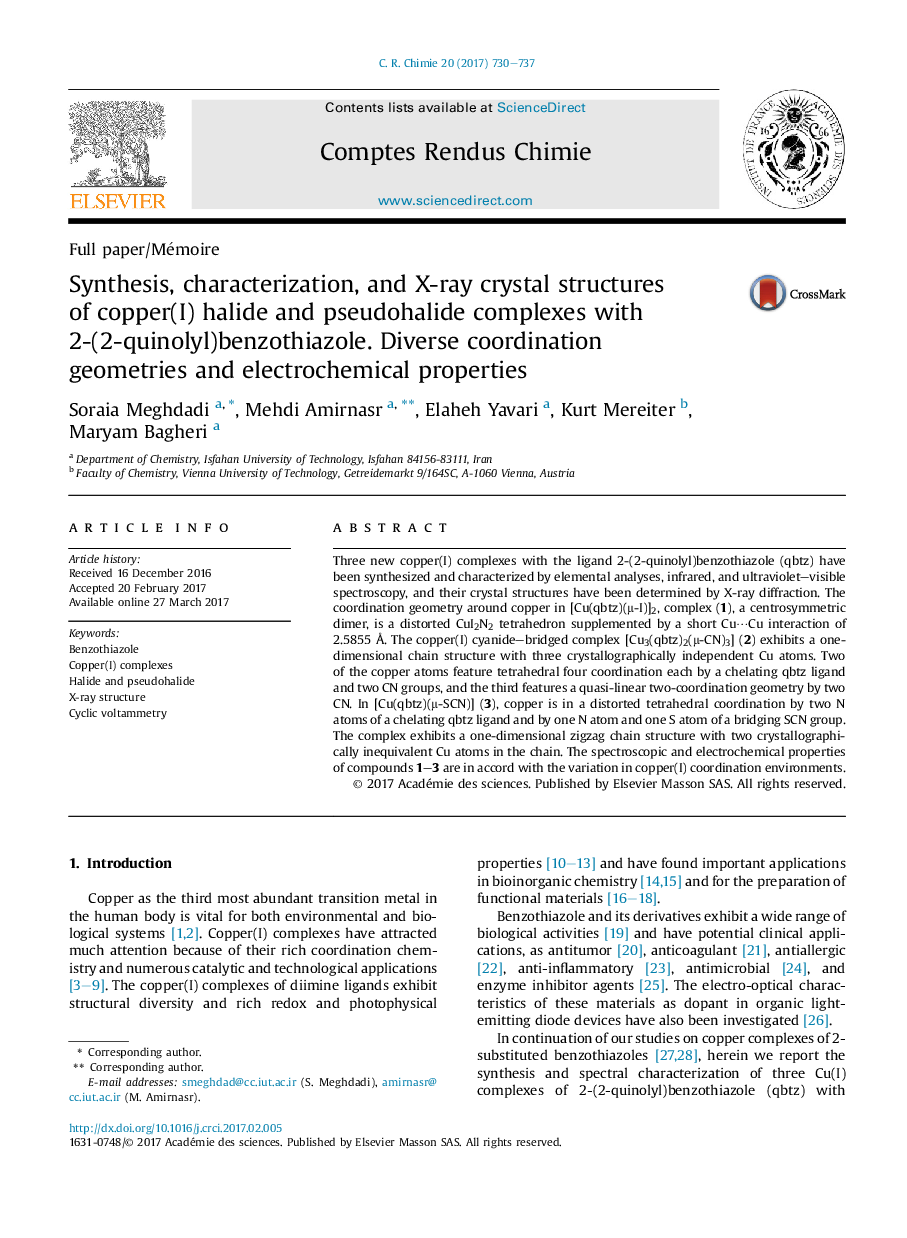| Article ID | Journal | Published Year | Pages | File Type |
|---|---|---|---|---|
| 6468633 | Comptes Rendus Chimie | 2017 | 8 Pages |
Three new copper(I) complexes with the ligand 2-(2-quinolyl)benzothiazole (qbtz) have been synthesized and characterized by elemental analyses, infrared, and ultraviolet–visible spectroscopy, and their crystal structures have been determined by X-ray diffraction. The coordination geometry around copper in [Cu(qbtz)(μ-I)]2, complex (1), a centrosymmetric dimer, is a distorted CuI2N2 tetrahedron supplemented by a short Cu⋯Cu interaction of 2.5855 Å. The copper(I) cyanide–bridged complex [Cu3(qbtz)2(μ-CN)3] (2) exhibits a one-dimensional chain structure with three crystallographically independent Cu atoms. Two of the copper atoms feature tetrahedral four coordination each by a chelating qbtz ligand and two CN groups, and the third features a quasi-linear two-coordination geometry by two CN. In [Cu(qbtz)(μ-SCN)] (3), copper is in a distorted tetrahedral coordination by two N atoms of a chelating qbtz ligand and by one N atom and one S atom of a bridging SCN group. The complex exhibits a one-dimensional zigzag chain structure with two crystallographically inequivalent Cu atoms in the chain. The spectroscopic and electrochemical properties of compounds 1–3 are in accord with the variation in copper(I) coordination environments.
Graphical abstractFigure optionsDownload full-size imageDownload high-quality image (184 K)Download as PowerPoint slide
